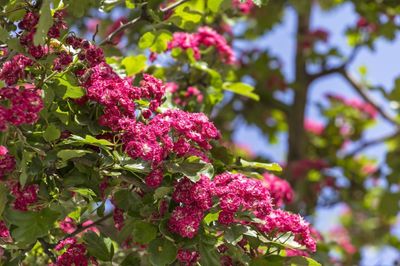What is an English Hawthorn?
English hawthorn, or Crataegus laevigata, is a small to medium-sized tree native to Europe and North Africa. It typically grows to reach 15 to 25 feet (5-8 m.), with a similar spread. The tree has lobed, green leaves and attractive bark similar to that of an apple tree. The branches of most varieties are thorny. English hawthorn is adapted to USDA zones 4b to 8. English hawthorns are commonly used as street trees and in urban landscapes, since they are tolerant of poor air and soil conditions and can be grown successfully even where the roots will be confined to relatively small spaces. They are also grown as bonsai or espalier trees. Abundant flowers in white, pink, lavender, or red appear on the tree in spring, followed by small red or orange fruit. Varieties bred for specific flower colors or with doubled flowers are available.
How to Grow English Hawthorn
Growing English hawthorns is easy. Like all hawthorn trees, they can tolerate a wide range of soil pH and moisture conditions, though the trees do not tolerate salt spray or saline soil. When choosing a site for the tree, be sure fallen fruit will not be a nuisance. These trees grow relatively slowly, but they live 50 to 150 years. For optimal English hawthorn care, plant in well-drained soil in sun to light shade and water regularly. However, established trees can tolerate dry conditions. English hawthorn trees are susceptible to several diseases, including leaf blight and leaf spot, and they are susceptible to fire blight and some other diseases that affect apples. Some cultivars, such as “Crimson Cloud,” may resist leaf diseases. Aphids, lace bugs, and several other insects may attack the foliage. Hopefully this English hawthorn info will help you decide whether this tree is right for your property.
